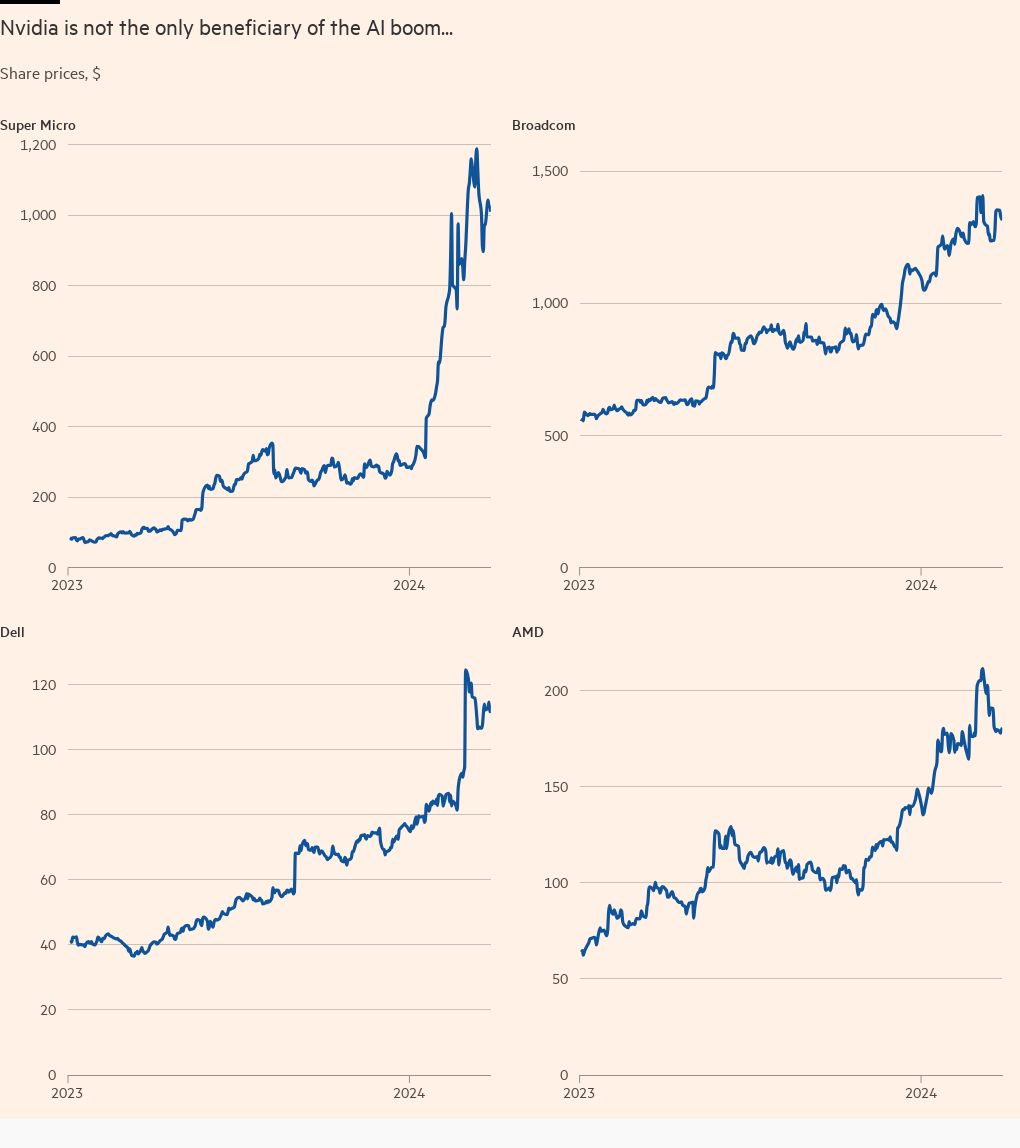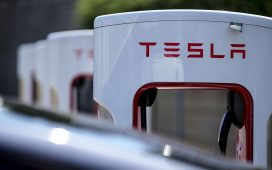Unlock the Editor’s Digest for free
Roula Khalaf, Editor of the FT, selects her favourite stories in this weekly newsletter.
At the big coming-out event for Nvidia’s latest artificial intelligence chip this month, chief executive Jensen Huang shared the spotlight with only one other tech boss — and even then, only momentarily. Michael Dell was seen waving from the front row, as Huang joked to the crowd that the PC pioneer would be happy to take their orders for new equipment capable of running AI.
For Dell, even that brief cameo had a point. Much of the tech world now revolves around Nvidia. Being able to get hold of enough of its chips is a big factor in meeting surging AI demand, and closeness to Huang has become key.
The reflected glory from Nvidia’s soaring stock price has also become apparent this year, as the AI boom has spread out more widely across Wall Street. Dell’s shares have tripled in the past year, including a 31 per cent leap on a single day this month, over signs that demand for servers embedded with Nvidia’s chips had brought a notable jump in orders.
Over the past year, much of the financial world’s attention has been on the soaring valuation of private AI companies such as OpenAI and Anthropic. But the wealth being generated in Wall Street’s broader AI boom has put this in the shade. Since chipmaker AMD announced in December that it had started to ship its latest AI chips, its market value has jumped by $100bn to $292bn — considerably more than the $80bn valuation of OpenAI.
AI euphoria has breathed life into unlikely corners of the tech world. The server market hasn’t been this hot since the turn of the century when hardware maker Sun Microsystems was one of Silicon Valley’s brightest stars. Thanks to a 50 per cent jump in demand for specialised AI equipment, overall server sales are set to grow at 23 per cent a year until the end of 2027, according to analysts at Bank of America.
Markets such as that can produce big winners. Shares in Super Micro, which has long specialised in supplying the most advanced servers for data centres, have soared 250 per cent since just the start of this year as sales have doubled.
Super Micro doesn’t identify its suppliers by name, but in the final quarter of last year a single, big supplier accounted for 68 per cent of its purchases, up from 18 per cent a year before. No wonder the body language between Nvidia’s Huang and other tech chiefs has become a market-moving event.
A similar dynamic has been apparent in the chip world. Broadcom, which makes AI chips on behalf of Google and others, has seen its shares double in the past year, adding $300bn to its value. Yet the rising tide hasn’t lifted all boats. Intel, which has made considerable headway on a turnaround and has its eyes set on the AI market, remains mired in a slump.
In many cases, the broadening of the AI stock market boom reflects a real and measurable jump in orders, as demand for the equipment to run generative AI takes off. But there are still good reasons to question whether this will be large or sustainable enough to justify the stock market’s wider tech surge.
One concern is that some early bets on AI are already losing their lustre. In the middle of last year, in the hunt for beneficiaries of generative AI, Wall Street alighted on software companies such as Adobe, which is expected to get a boost in sales of its services. Yet customers are not yet paying enough for new AI features. Adobe’s revenue forecast this year has disappointed and its shares have fallen back 20 per cent from their high.
Another is that tech infrastructure markets are invariably cyclical, even if they sometimes benefit from extended secular shifts as new platforms emerge. When the booms fade, the aftermaths are often painful. Hit by a slump in the crypto markets and a bumpy product transition, Nvidia suffered a 65 per cent share price plunge as recently as 2022.
Also, the tech budgets of the large businesses that are the biggest end buyers of technology have not risen along with the excitement around AI. Most of the spending on new technology is coming out of existing budgets. For the fortunes of the tech sector as a whole to benefit, overall IT spending needs to rise considerably.
Aaron Levie, chief of cloud storage company Box, said even big companies were carving out only relatively small amounts of $2mn or so to test generative AI. It would take two to three years, he added, for the biggest users of tech to grow comfortable with generative AI and work out how to fit it into their workers’ lives, leading — hopefully — to a measurable increase in spending.
Only then will it start to become clear if AI will be as big a deal as Silicon Valley’s boosters claim. Whether Wall Street has the patience to wait it out is another question.









